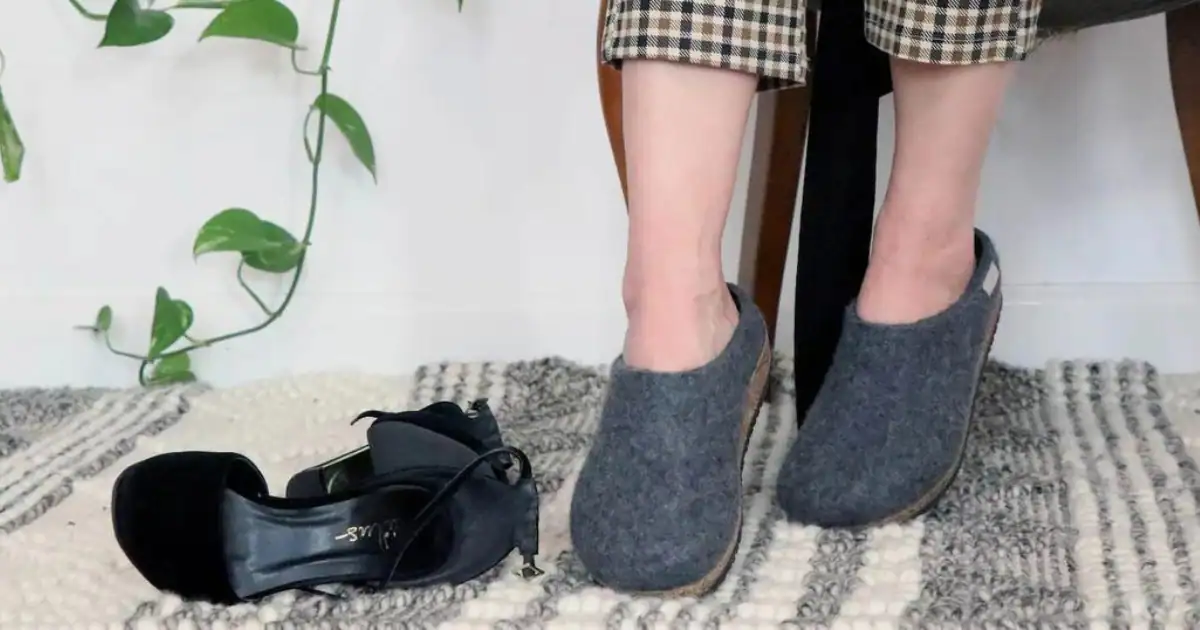Are you tired of dealing with the persistent heel pain caused by plantar fasciitis? If so, you’re not alone. Plantar fasciitis is a common foot condition that can make each step feel like a challenge. The good news is that finding the right footwear can significantly alleviate the discomfort associated with this condition. Following the world of shoes designed specifically for plantar fasciitis, providing you with the information you need to make an informed decision and walk pain-free.
Table of Contents
Understanding Plantar Fasciitis
Plantar fasciitis is the inflammation of the plantar fascia, a thick band of tissue that runs across the bottom of your foot, connecting your heel bone to your toes. The pain is often most intense with the first steps in the morning, making it crucial to find footwear that supports and cushions your feet throughout the day.
The Importance of Proper Footwear
Wearing the right shoes is key to managing and preventing plantar fasciitis pain. Supportive footwear can help distribute your body weight evenly, reduce strain on the plantar fascia, and provide cushioning to absorb shock during walking. Investing in shoes designed for plantar fasciitis is a proactive step towards comfort and improved foot health.
The Benefits of Orthotic Inserts
Orthotic inserts can be a game-changer for those suffering from plantar fasciitis. These inserts provide additional arch support, cushioning, and stability, enhancing the comfort of any shoe. Custom orthotics, prescribed by a podiatrist, are tailored to your specific foot shape and needs, while over-the-counter options are also available for a more immediate solution. Using orthotic inserts in combination with supportive footwear can significantly reduce pain and aid in the healing process.
Characteristics of the Best Shoes for Plantar Fasciitis
1. Arch Support
One of the most critical features to look for in shoes for plantar fasciitis is excellent arch support. The arch of your foot acts as a natural shock absorber, and proper support helps reduce strain on the plantar fascia. Look for shoes with a firm arch support that matches the contours of your foot.
2. Cushioning
Effective cushioning is another essential element. Shoes with ample cushioning provide a comfortable barrier between your foot and the ground, minimizing impact and reducing pain. Memory foam and gel inserts are popular choices for enhanced cushioning.
3. Heel Support
Since plantar fasciitis often involves heel pain, it’s crucial to choose shoes with excellent heel support. A sturdy heel counter stabilizes the heel and prevents excessive movement, contributing to overall foot comfort.
4. Flexibility
While support is crucial, so is flexibility. Look for shoes that offer a balanced mix of support and flexibility, allowing your foot to move naturally without straining the plantar fascia.
5. Proper Sizing
Choosing the right size is a fundamental yet often overlooked aspect. Ill-fitting shoes can exacerbate plantar fasciitis symptoms. Ensure your shoes have a snug fit without being too tight, and consider brands that offer a variety of widths for a personalized fit.
Exercises to Complement Your Footwear
While wearing the right shoes is crucial, complementing them with specific exercises can further alleviate plantar fasciitis symptoms. Stretching exercises, such as calf stretches, Achilles tendon stretches, and plantar fascia stretches, help improve flexibility and reduce tension in the foot. Strengthening exercises, like towel curls and toe taps, can enhance the muscles supporting the arch. Incorporating these exercises into your daily routine can accelerate recovery and prevent future flare-ups.
The Top Picks: Best Shoes for Plantar Fasciitis
Now that we’ve outlined the key features to look for, let’s explore some of the top choices in the market that combine these elements to provide optimal relief for plantar fasciitis.
1. Brooks Addiction Walker
The Brooks Addiction Walker is a standout option, known for its exceptional arch support and cushioning. Its BioMoGo DNA technology adapts to your stride, providing a customized feel with every step.
2. New Balance 990v5
The New Balance 990v5 is a favorite among those dealing with plantar fasciitis. With a combination of stability and comfort, this shoe boasts superior arch support and a durable design.
3. ASICS GEL-Kayano 28
ASICS is a well-known name in the athletic shoe industry, and the GEL-Kayano 28 doesn’t disappoint. It offers excellent heel and arch support, making it an ideal choice for individuals with plantar fasciitis.
4. Hoka One One Bondi 7
For those seeking maximum cushioning, the Hoka One One Bondi 7 is a game-changer. Its plush cushioning and rocker sole design reduce stress on the plantar fascia, promoting a smoother gait.
5. Merrell Jungle Moc
Combining style with functionality, the Merrell Jungle Moc is a slip-on option praised for its supportive features. Its air cushion in the heel absorbs shock, providing relief for plantar fasciitis sufferers.
Seasonal Footwear Tips
Finding supportive footwear for different seasons is essential to managing plantar fasciitis year-round. In summer, opt for sandals with built-in arch support and cushioning, like those from brands known for their orthopedic designs. For winter, look for boots that offer the same supportive features while providing warmth and traction.
Additionally, insoles designed for seasonal shoes can provide the necessary support when switching between different types of footwear. Ensuring your shoes are supportive, regardless of the season, will help maintain foot health and comfort throughout the year.
The Decision-Making Process
With these top picks in mind, let’s discuss the decision-making process to help you choose the best shoes for your specific needs.
Step 1: Assess Your Foot Type
Understanding your foot type is crucial in selecting the right shoes. Whether you have flat feet or a high arch, there are shoes designed to address your specific requirements. If you’re unsure, many shoe stores offer foot analysis services to determine your foot type.
Step 2: Consider Your Activity Level
Different shoes cater to various activities. If you’re primarily walking for exercise, a walking shoe like the Brooks Addiction Walker may be suitable. If you engage in running or more intense activities, options like the ASICS GEL-Kayano 28 provide the necessary support.
Step 3: Read Reviews and Gather Feedback
Take advantage of online resources by reading reviews from individuals who share similar foot conditions. Real-life experiences can provide valuable insights into how a particular shoe performs in addressing plantar fasciitis symptoms.
Step 4: Try Before You Buy
If possible, visit a physical store to try on the shoes you’re interested in. Walk around, assess the comfort, and ensure they meet your specific needs. Many shoe stores also have knowledgeable staff who can guide you in finding the right fit.
Step 5: Check Return Policies
Despite thorough research, there’s always a chance that a shoe may not work for you. Before making a purchase, familiarize yourself with the return policies of the retailer. This ensures you can exchange or return the shoes if they don’t provide the expected relief.
Conclusion
In conclusion, finding the best shoes for plantar fasciitis involves a combination of understanding your needs, researching options, and making an informed decision. By prioritizing arch support, cushioning, heel support, flexibility, and proper sizing, you can significantly reduce the impact of plantar fasciitis on your daily life.
Investing in quality footwear is an investment in your well-being. Consider the top picks mentioned, assess your individual requirements, and take proactive steps towards walking pain-free. Remember, the journey to finding the perfect shoe may take time, but the relief and comfort they provide are well worth the effort.
Frequently Asked Questions (FAQs)
How do I know if I have plantar fasciitis, and why is it important to wear specific shoes for this condition?
Plantar fasciitis is often characterized by heel pain, especially during the first steps in the morning. A proper diagnosis from a healthcare professional is essential. Wearing shoes designed for plantar fasciitis is crucial as they provide the necessary support, cushioning, and stability to alleviate symptoms and prevent further discomfort.
Are there specific features I should look for in shoes to effectively address plantar fasciitis?
Yes, there are key features to consider. Look for shoes with firm arch support, ample cushioning, sturdy heel support, a balance of support and flexibility, and ensure they are the proper size. These features work together to reduce strain on the plantar fascia and promote overall foot comfort.
Can I find stylish shoes that also cater to plantar fasciitis, or are my options limited to athletic designs?
Absolutely! Many brands offer stylish options that prioritize both fashion and function. For instance, the Merrell Jungle Moc mentioned in the article is a slip-on option known for its supportive features and stylish design. It’s proof that you can find shoes that complement your wardrobe while addressing plantar fasciitis.
How long does it take for plantar fasciitis shoes to show noticeable relief, and are there additional measures I can take for faster recovery?
Relief varies from person to person, but consistent use of proper footwear can lead to noticeable improvement within a few weeks. In addition to wearing supportive shoes, consider incorporating stretching exercises recommended by your healthcare provider, using orthotic inserts, and avoiding activities that exacerbate the condition.
Can I buy shoes for plantar fasciitis online, or is it recommended to try them on in-store?
While buying online is convenient, trying on shoes in-store is advisable if possible. It allows you to assess the fit, comfort, and support firsthand. If you opt for online purchases, ensure the retailer has a flexible return policy so you can exchange or return the shoes if they don’t meet your expectations.



